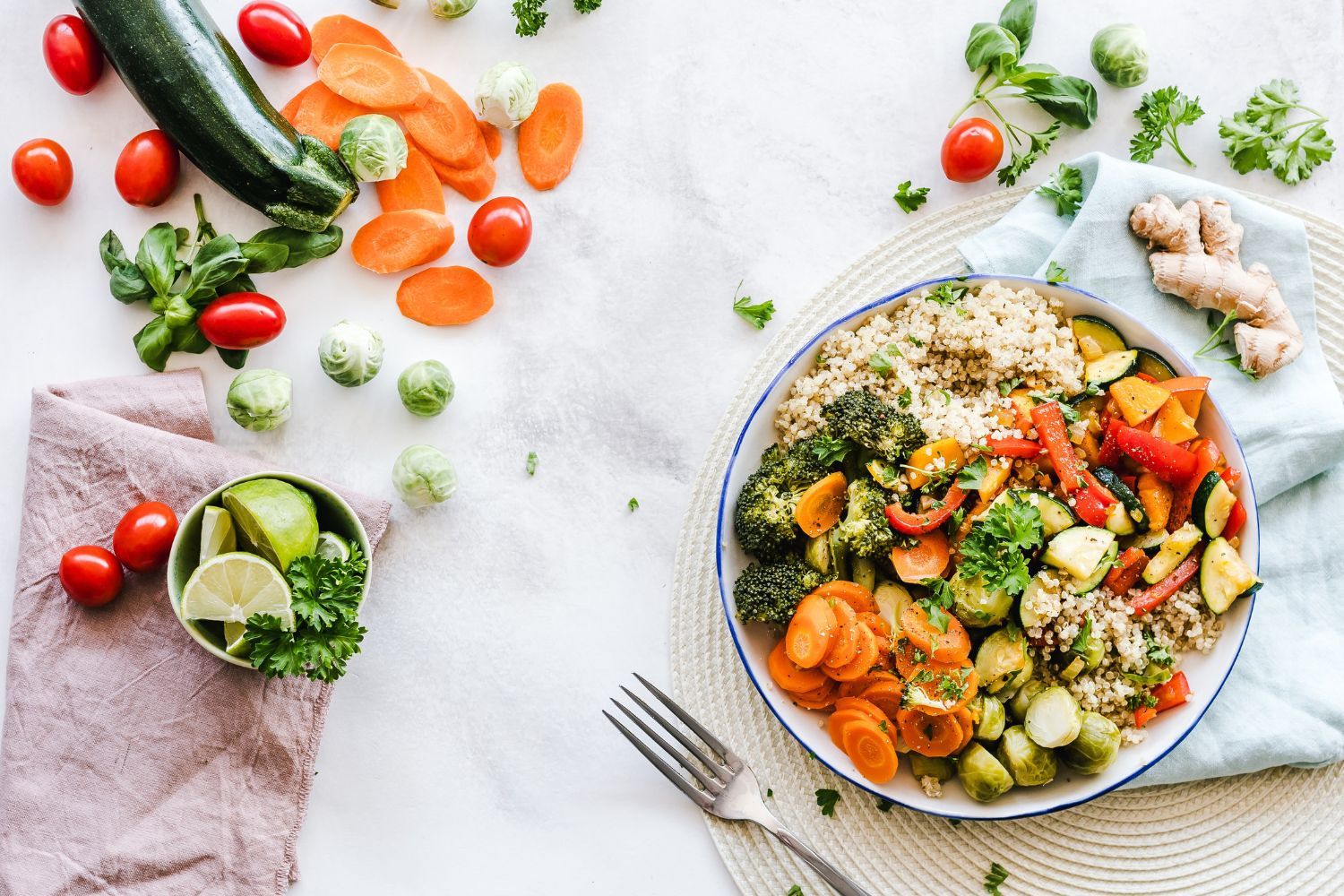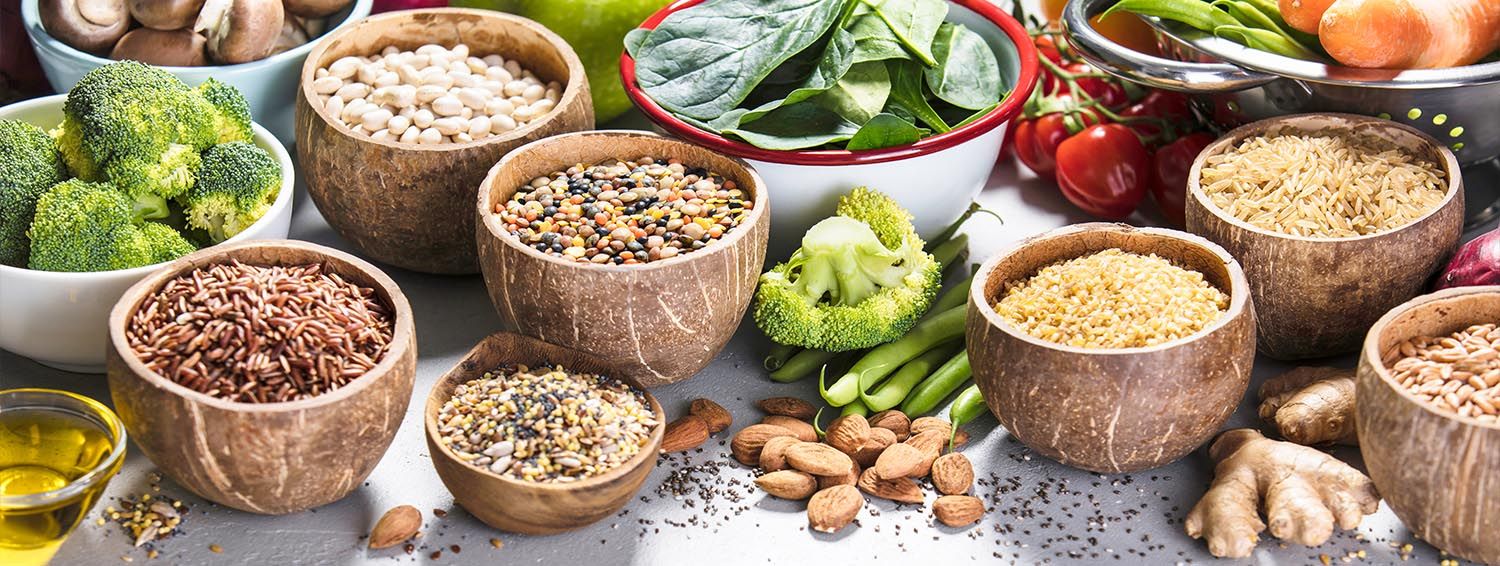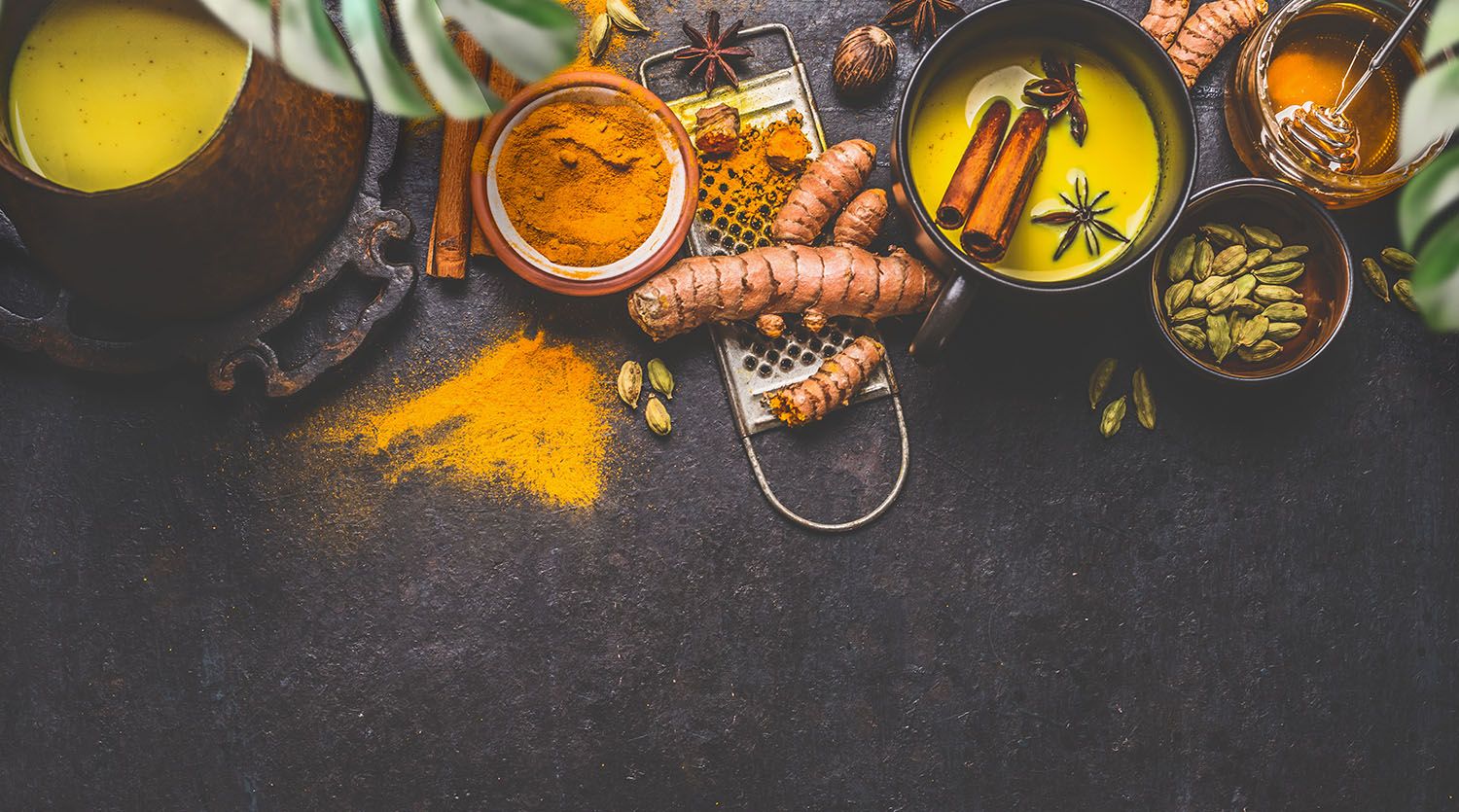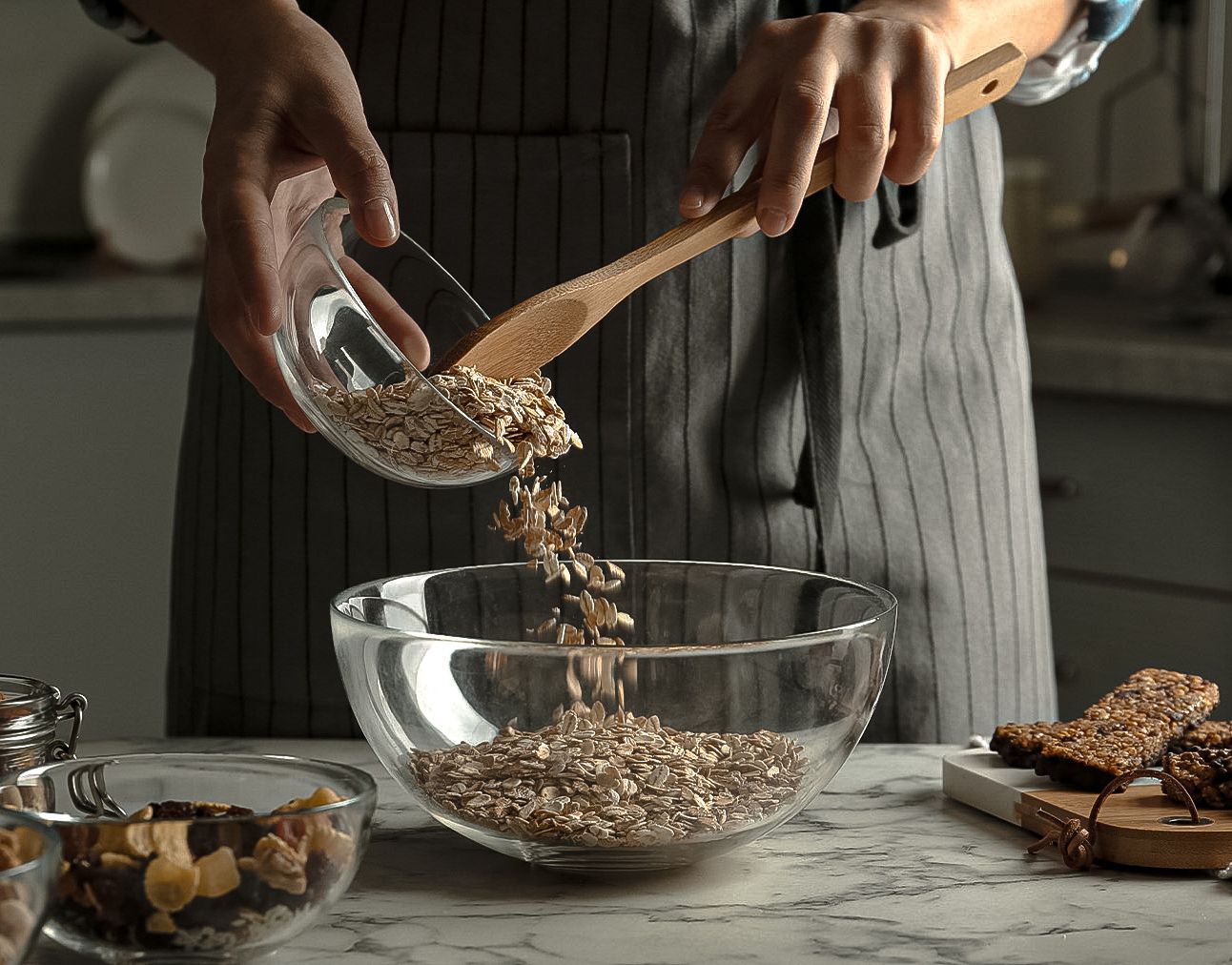Top Tips for Following a Low-FODMAP Vegan Diet (with Recipes!)
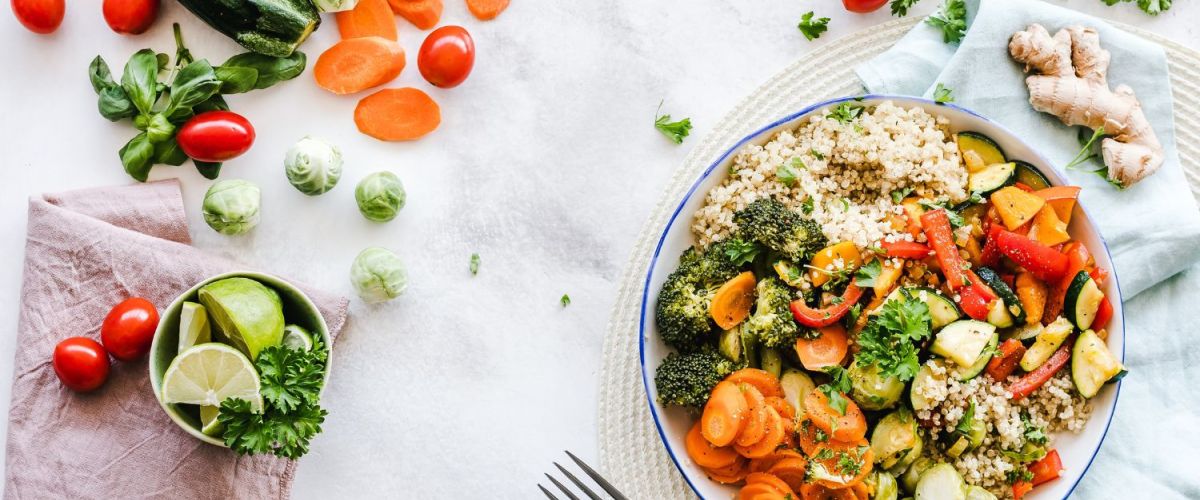
Top Tips for Following a Lower-FODMAP Vegan Diet
Navigating a vegan diet while also managing symptoms of irritable bowel syndrome (IBS), endometriosis, or other gastrointestinal issues can be challenging, but it’s certainly possible with the right approach. Here we’ll go over some practical tips for following a lower-FODMAP vegan diet, ensuring that you can enjoy a plant-based lifestyle while minimizing digestive discomfort. Whether you’re new to the low-FODMAP diet or a seasoned vegan looking for ways to optimize your eating habits, these tips will help you thrive on a plant-based, low-FODMAP diet. Then we’ll go in to some simple swaps you can start to incorporate into your diet today!
Educate Yourself About FODMAPs:
Before diving into a lower-FODMAP vegan diet, take the time to educate yourself about FODMAPs – fermentable carbohydrates that can trigger digestive symptoms in sensitive individuals. Understand which foods are high and low in FODMAPs, and familiarize yourself with suitable vegan alternatives. I have a low-FODMAP guide that can walk you through this first process.

Focus on Low-FODMAP Vegan Whole Foods
Base your diet around whole, minimally processed foods that are naturally low in FODMAPs. Incorporate plenty of fruits, vegetables, tofu, tempeh, and gluten-free grains like rice and quinoa into your meals. These foods provide essential nutrients while minimizing the risk of triggering digestive issues. (See more specific examples below!)
Use FODMAP-Friendly Cooking Methods
Experiment with cooking methods that help reduce FODMAP content in foods. For example, opt for baking, grilling, steaming, or boiling instead of frying, which can increase FODMAP levels. Be mindful of seasoning choices and avoid high-FODMAP ingredients like garlic and onion.
Choose Suitable Dairy Alternatives
Swap traditional dairy products for lactose-free or low-lactose alternatives in your vegan recipes. Opt for almond milk, coconut milk, lactose-free yogurt, or aged vegan cheeses made from nuts. These options provide the creamy texture you crave without the potential for digestive discomfort.

Experiment with Plant-Based Protein Sources
Diversify your protein sources by incorporating tofu, tempeh, edamame, and canned lentils or chickpeas (after rinsing well!) into your meals. These plant-based proteins offer a wide range of essential nutrients while being gentle on the digestive system. (note: using canned chickpeas and rinsing them well can make them lower-FODMAP!).
Be Mindful of High-FODMAP Foods
While many plant-based foods are naturally low in FODMAPs, some common vegan staples can be high in these fermentable carbohydrates. Watch out for ingredients like onions, garlic, cauliflower, mushrooms, and certain legumes (black beans, kidney beans), as they may exacerbate digestive symptoms.
Monitor Portion Sizes
This was a HUGE part to learn during my transition to the FODMAP diet initially. Pay attention to portion sizes, especially when consuming foods that contain moderate FODMAP levels. While small amounts of certain high-FODMAP foods may be tolerated, larger servings could lead to discomfort. Use the Monash University FODMAP app as a guide to determine appropriate portion sizes.

Read Labels Carefully
When purchasing packaged vegan products, read labels carefully to identify potential high-FODMAP ingredients. Look for products labeled as low-FODMAP or free from common triggers like onion and garlic. Be cautious of hidden sources of FODMAPs in sauces, condiments, and processed foods. (Gluten, Chicory Root, Garlic, Onion, Dates – to name a few!)
Plan Ahead and Prep Meals
Take the time to plan your meals and snacks in advance to ensure that you have plenty of low-FODMAP options on hand. Batch cooking and meal prepping can save time and make it easier to stick to your dietary goals, especially on busy days. Check out my plant-based meal plan here.

Listen to Your Body
Above all, listen to your body and pay attention to how different foods make you feel. Keep a food diary to track your symptoms and identify any triggers. Be patient and willing to adjust your diet as needed to find the balance that works best for you! I find that gentle yoga can help us connect to our bodies and notice all the subtle shifts and differences. Check out a gentle yoga class for IBS here.

Top FODMAP Swaps for the Vegan Diet
Okay here we go! These vegan food swaps provide delicious alternatives to higher FODMAP ingredients, allowing you to enjoy flavorful meals while reducing your FODMAPs.
- Cashew Milk → Try Almond Milk: Substitute cashew milk with almond milk, which is lower in FODMAPs and suitable for lactose-free and vegan diets.
- Mushroom or Black Bean Burger → Try Chickpea or Tofu Burger: Opt for chickpea or tofu-based veggie burgers instead of mushroom or black bean-based ones. Chickpeas and tofu are low in FODMAPs and offer a hearty, protein-rich alternative.
- Black Bean Chili → Try Lentils: Replace black beans with lentils in chili recipes. Lentils are a low-FODMAP legume (especially red lentils) and provide a similar texture and protein content to black beans.
- Garlic Hummus → Try Plain, Beetroot, Pine Nut Hummus: Watch out for garlic in ingredients! Choose plain hummus to reduce FODMAP content. Traditional hummus recipes often contain garlic, but other varieties are available and equally delicious.
- Onion Powder → Try Asafoetida Powder: Swap onion powder for asafoetida powder, a low-FODMAP spice that adds a similar flavor profile to dishes without causing digestive discomfort. Asafoetida can be a more unique flavor and may take a while to get used to – it is also quite powerful. Start with VERY small quantities when adding to your dishes.
- Wheat Tortillas → Try Corn Tortillas: Opt for corn tortillas over wheat tortillas for a low-FODMAP alternative. Corn tortillas are naturally gluten-free and well-tolerated by many individuals following a FODMAP-conscious diet.
- Whole Wheat Bread → Try Gluten-Free Bread: Choose gluten-free bread made from rice flour or other low-FODMAP flours instead of whole wheat bread. Gluten-free options are less likely to cause digestive issues for individuals sensitive to wheat.
- Onion Dip → Try Olive Tapenade: Opt for olive tapenade instead of onion-based dips for a flavorful, low-FODMAP alternative. Olive tapenade is made from olives, capers, and olive oil, offering a delicious dip or spread option.
- Cashew Cheese → Try Firm Tofu Cheese: Substitute cashew-based cheese with firm tofu cheese in recipes like lasagna or pizza. Firm tofu is low in FODMAPs and can be seasoned and baked to mimic the texture of cheese.
- Cauliflower Rice → Try Quinoa: Replace cauliflower rice with quinoa for a nutritious, low-FODMAP alternative. Quinoa is a gluten-free whole grain that provides protein, fiber, and essential nutrients.
- Garlic Cloves → Infused Your Own Oil: Use infused oils like garlic-infused olive oil for a hint of garlic flavor without the high FODMAP content. Infused oils are made by steeping herbs or spices in oil and can be used in various recipes. It is easy to do yourself – simply add a couple tablespoons of oil to a small bowl and toss in some garlic cloves!
- Wheat Pasta → Try Brown Rice or Quinoa Pasta: Opt for brown rice or quinoa pasta over wheat pasta for a gluten-free, low-FODMAP alternative. Brown rice & quinoa pasta is easy to digest and suitable for individuals with gluten sensitivity or FODMAP intolerance.
- Brown Lentils → Try Red Lentils: Choose red lentils over other lentil varieties for a lower FODMAP option. Red lentils are easier to digest and less likely to cause digestive discomfort compared to green or brown lentils.
- Garlic Bread → Try Garlic-Infused Oil + Herbs: Enjoy herb-infused bread instead of traditional garlic bread to reduce FODMAP content. Herb-infused bread is flavored with garlic oil instead and herbs like rosemary, thyme, or oregano for added taste without the high FODMAPs found in garlic powders.
- Black Bean Dip → White Bean Dip: Substitute black bean dip with white bean dip for a low-FODMAP alternative. White beans, such as cannellini or navy beans, are lower in FODMAPs and can be blended into a creamy dip with herbs and spices.
- Mushroom Stir-Fry → Tofu Stir-Fry: Opt for tofu stir-fry instead of mushroom stir-fry to reduce FODMAP content. Tofu is a versatile, low-FODMAP protein source that can be stir-fried with vegetables and flavorful sauces for a delicious meal.
- Avocado Toast → Mashed Pumpkin Toast: Enjoy mashed pumpkin toast instead of avocado toast for a low-FODMAP breakfast or snack option. Mashed pumpkin is easy to spread on toast and pairs well with toppings like seeds, herbs, or a drizzle of olive oil.
Following a lower-FODMAP vegan diet may require some extra effort and planning, but it’s entirely achievable with the right knowledge and approach. By focusing on whole, minimally processed foods, experimenting with suitable plant-based protein sources, and being mindful of portion sizes and high-FODMAP ingredients, you can enjoy the benefits of a vegan lifestyle while managing digestive symptoms effectively. With these tips in mind, you’ll be well-equipped to thrive on a plant-based, low-FODMAP diet for optimal health and well-being. Need more inspiration? Check out my low-FODMAP vegan recipes here.

